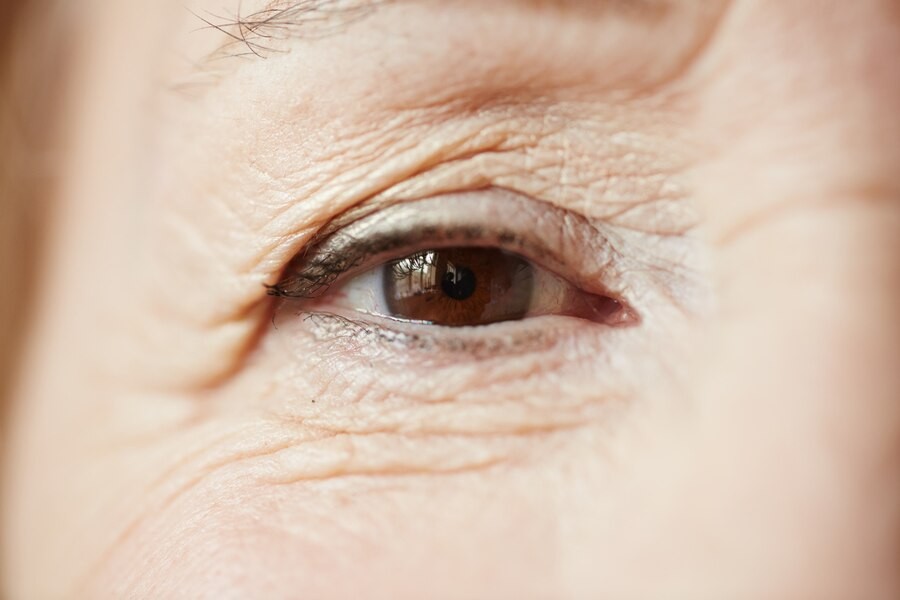Ptosis, commonly known as drooping eyelids, is a condition that can affect both children and adults. People with ptosis typically experience their eyelids drooping, which can influence their appearance. Beyond aesthetic concerns, this condition can also impact vision. Read on to learn more about ptosis, its causes, and treatment options.
What is Ptosis?
Ptosis, also referred to as blepharoptosis, is a medical condition characterized by the drooping of one or both eyelids. This condition occurs due to issues with the muscles or tissues responsible for lifting the eyelids. In some cases, ptosis is caused by nerve-related problems that interfere with the proper function of the eyelid muscles.
Normally, the eyelids rest in a position that does not block your vision, allowing clear sight. However, in individuals with ptosis, the eyelids drop to a point where they can obstruct the field of vision.
The severity of ptosis can range from mild to severe. In more advanced cases, the drooping eyelids may cover a significant portion of the pupil, potentially causing considerable visual impairment.
Causes of Ptosis
Ptosis can result from various causes, from natural aging to specific medical conditions. Here are some of the most common causes of drooping eyelids:
Aging
As we age, the muscles and tissues around the eyelids naturally weaken and stretch. This process makes it harder for the eyelids to stay in their normal, elevated position. Age-related ptosis is a common occurrence and typically affects both eyelids, leading to gradual drooping over time.
Muscle or Nerve Disorders
Disorders affecting the muscles or nerves responsible for eyelid movement can result in ptosis. One such condition is myasthenia gravis, an autoimmune disorder that weakens the muscles, including those responsible for eyelid movement. In this case, the eyelids may droop due to the inability of the muscles to lift them properly.
Another potential cause of ptosis is diabetic neuropathy, a complication of poorly controlled diabetes. This condition can lead to nerve damage, including the nerves that control eyelid muscles, causing them to malfunction and result in drooping eyelids.
Trauma
Physical injuries to the eye or the surrounding area can damage the muscles, nerves, and supportive tissues of the eyelids, leading to ptosis. Eye surgeries, such as cataract removal or other procedures, can also cause injury to the eyelid structures and result in drooping eyelids as a complication.
Congenital Disorders
Some people are born with ptosis due to developmental abnormalities of the eyelid muscles during pregnancy. This is known as congenital ptosis, and it typically affects one or both eyelids.
Presence of Tumors or Other Diseases
In some cases, the growth of a tumor or lump on the eyelid or in the nearby areas can exert pressure on the eyelid muscles or tissues. This pressure can cause the eyelids to droop and make them difficult to lift.
Additionally, certain medical conditions, including Horner’s syndrome, stroke, and some types of cancer, may also lead to ptosis as a symptom.
The treatment for ptosis depends on the underlying cause and the severity of the condition. If ptosis does not interfere with vision, it may not require any treatment. However, when the condition affects vision or causes aesthetic concerns, a doctor may recommend treatment options, such as surgical procedures.
Have questions about ptosis or related concerns? You can consult a doctor through the health consultation service on the Ai Care app, available for download from both the App Store and Google Play.
Looking for more information about other diseases? Click here!
- dr Hanifa Rahma
WebMD (2024). What Is Ptosis?. Available from: https://www.webmd.com/eye-health/ptosis
Cleveland Clinic (2023). Ptosis (Droopy Eyelid). Available from: https://my.clevelandclinic.org/health/diseases/14418-ptosis-droopy-eyelid
Rachael Ajmera, MS, RD (2023). Ptosis: Droopy Eyelid Causes and Treatment. Available from: https://www.healthline.com/health/eyelid-drooping
Harvard Medical School (2024). The aging eye: when to worry about eyelid problems. Available from: https://www.health.harvard.edu/staying-healthy/the-aging-eye-when-to-worry-about-eyelid-problems
NIH. Myasthenia Gravis. Available from: https://www.ninds.nih.gov/health-information/disorders/myasthenia-gravis
Mayo Clinic (2022). Diabetic neuropathy. Available from: https://www.mayoclinic.org/diseases-conditions/diabetic-neuropathy/symptoms-causes/syc-20371580








